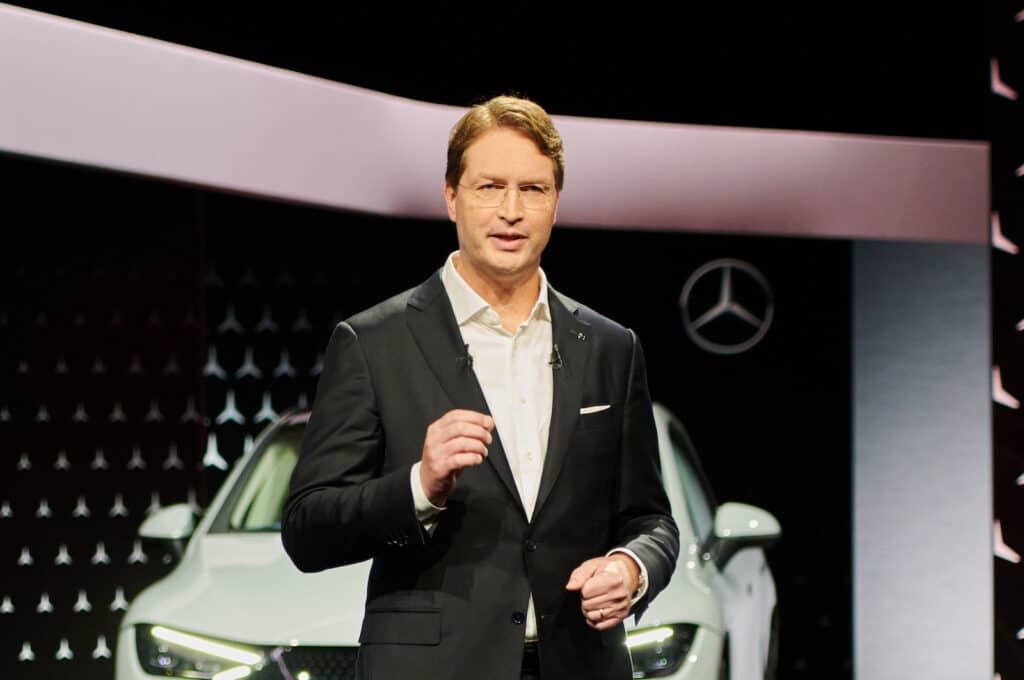When the Mercedes-Benz EQS rolls into showrooms later this month it will become the luxury brand’s first all-electric vehicle targeting the U.S. market. But it certainly won’t be the last. If anything, Mercedes plans to roll out a broad line-up of battery-powered products, from the little EQB crossover to an all-electric version of the big G-Class SUV.
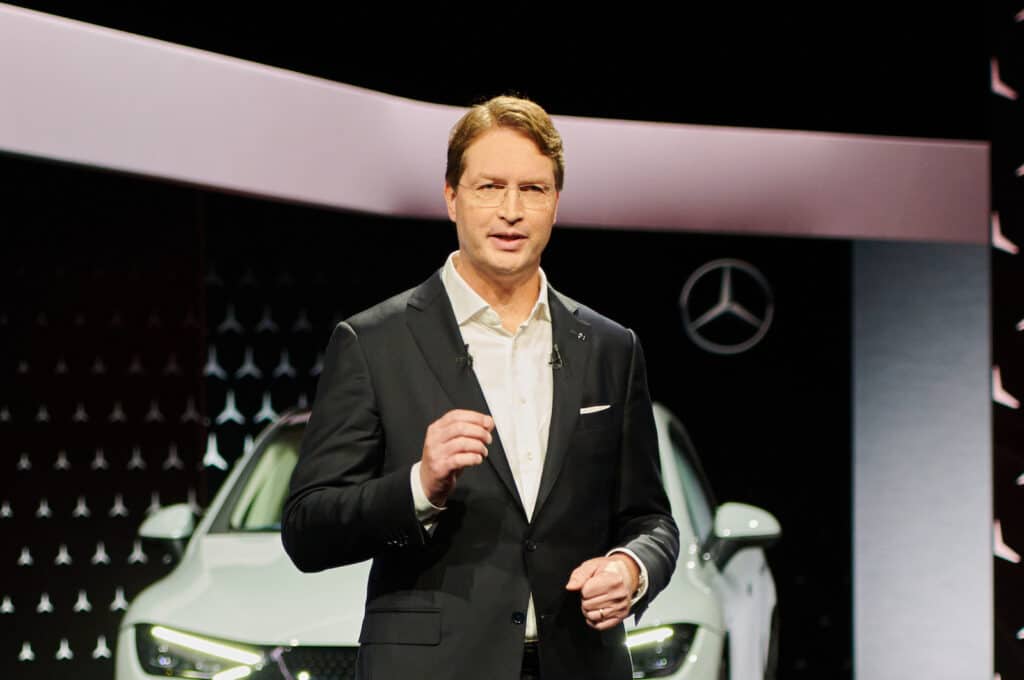
Until a few years ago, Mercedes put its primary focus on diesel, but it changed direction in the wake of an embarrassing emissions scandal — and in the face of increasingly stringent global emissions standards. By 2025, the goal is to have plug-in hybrid and all-electric models account for 50% of the company’s worldwide sales. By 2030, CEO Ola Källenius announced in July, the target is 100% BEVs “where market conditions allow.”
The Swedish-born executive — the first non-German to helm Mercedes since it was founded — is a true believer in electrification, as he made clear during a virtual interview with TheDetroitBureau.com and a handful of other journalists.
TheDetroitBureau: From your perspective, how has the (industry’s) approach to electrification changed? It appears things are ramping up at a faster and faster pace. Why is that happening?
Källenius: If we look back in history, when one technology replaced another … for the longest time, it seems like nothing is happening. Then, it happens all at once and the whole market flips. It goes very fast. If you miss that point that can be very unfortunate for your business with the development cycles we have in the auto industry. From the first stroke of a pen to have the first vehicles from a completely new architecture (is) usually a four- or five-year process. So, we are now upping the bet.
TDB: But why such a big investment?
Källenius: I’m ever so slightly biased but I think the EQS is a phenomenal vehicle and can imagine what the electric car will look like 10 years from now. I think there’s optimism in terms of the technology, with better energy density on the battery side. Cost are scaling (down) and we’re pushing to an inflection point where the new technology will be superior to what we have now.
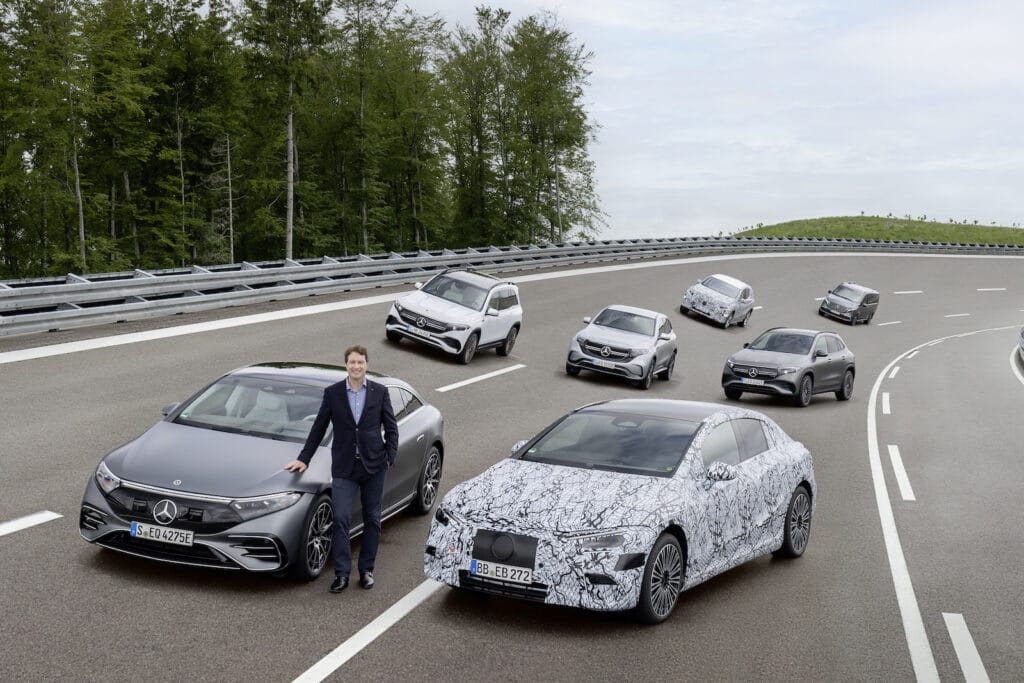
Drivers of change and acceptance
TDB: Is the shift being driven by new regulations?
Källenius: Partly, it is regulatory driven, but it’s through one common purpose we have as mankind, to solve the CO2 problem. It’s not going to go away. Climate change is real and the Paris Agreement is the right thing to do. It’s a Herculean task for humanity, a complete paradigm shift over to new energy sources. A company like Mercedes, in the luxury car (market), can be on the forefront of such a shift.
TDB: What is the key obstacle to consumer acceptance? Is it the lack of a solid charging infrastructure?
Källenius: Something that could make this happen a little faster or a little slower is the infrastructure. People aren’t going to (drive) less. In fact, we believe people are going to (drive) much more 10 years from now. So, here, industry and government need to work hand-in-hand to put in (a charging) infrastructure. The quicker that happens, the quicker the shift. In markets that don’t do this, it will be an obstacle that makes the transition to EVs go slower.
TDB: It certainly appears investors want automakers to shift to electric.
Källenius: Every conversation that we have with investors, even rating institutes like Standard and Poor’s and Moody’s, the financial markets have made up their minds. It’s going to be increasingly difficult to find capital to invest in (internal combustion) technology, and everybody is betting on the new technology so in a way the market economy and allocation of capital is pushing this forward.
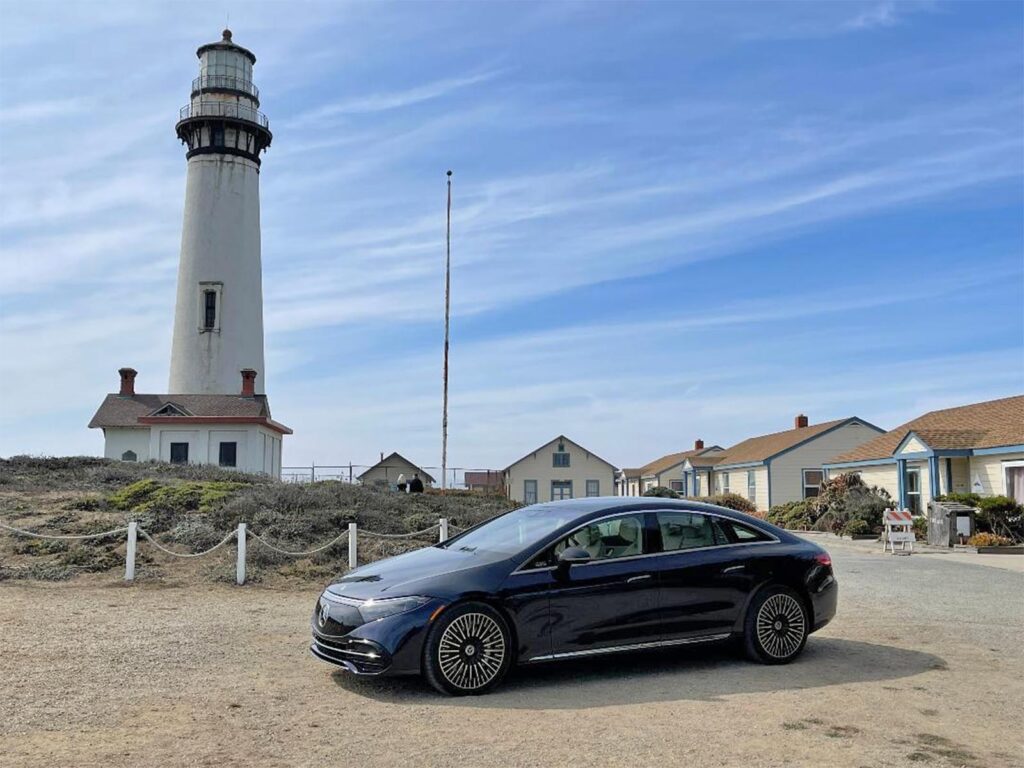
New set of competitors
TDB: Not only do you have to compete with legacy automakers but you have to now start competing with this wave of EV startups, what’s the unique challenge there when it comes to competing with nascent EV makers? How do you compete with them?
Källenius: It’s natural that new players look at a market and enter and so the competitive intensity in this decade will likely be higher than what we have experienced in the past. We are taking the usual suspects seriously, as well as the new kids on the block. You cannot run around like a headless chicken chasing this that or the other company, you’ve got to know who you are. In this situation you cannot rest on your laurels, you have to look forward. So, what we need to do is to double down on technology, primarily electric drive and software and the connected vehicle and autonomous driving. But, at the same time, (we must) deliver what everybody expects from a Mercedes, you know this sublime ride and drive the equation to detail this superior aesthetic quality. If we hit the spot (and) deliver on both innovation and the luxury aspects of the Mercedes brand, that’s how we think we can win the competition.
TDB: You have been a powerhouse in the all-electric Formula-E series. What are your future plans?
Källenius: We won the championship this year and we’re going to have one more season, but beyond that season, we’re focusing everything on Formula One. We’re going to turn to synthetic fuels so we can run the whole race carbon neutral. I’ve been to a few Formula E races myself and enjoyed it as a racing fan, but if you would take one of those cars and go to Spa, you would maybe do a lap and a half and then it would be over. So for those who are, you know, hardcore racing fans at heart, you can’t replace (traditional racing cars with electric).
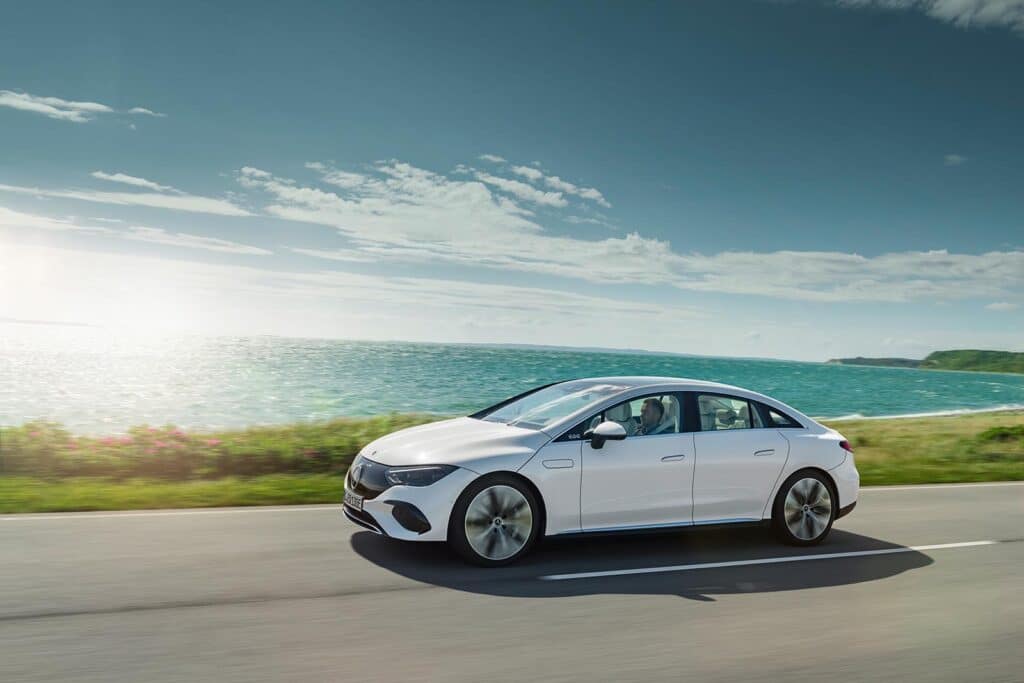
TDB: Can you talk about the role of electrification in motor sports?
Källenius: I actually had the privilege back in 2008 to develop the very first performance hybrid for Formula One. And now we are (more than) 10 years later, and you can’t win the world championship, unless you have the best performance hybrid system. And what we’re now launching in the AMG GT is the first road version of that technology. It will be on many of the AMG cars that we’re going to launch in the next two to three years. Formula One is the most sophisticated high performance Lab in the world.
TDB: This raises the subject of EV performance. It appears that one of the things drawing people to EVs is the great performance they offer.
Källenius: The great thing about an electric motor is that the torque is instantly available, and you have a lot of torque. So, at a red light, we all feel like we’re driving an AMG GT, right. You have this instant punch. Maybe you saw that we bought the UK company, Yasa, that is developing an electric motor with an absolutely phenomenal power-to-weight ratio. So there will be there will be a performance dimension beyond just being quick at the red light.
Advanced technology pros and cons
TDB: You’ve introduced the Hyperscreen in the EQS (which covers virtually the entire instrument panel with video screens). Do you think they’ll ever be a move back towards more simplification for an older demographic that can’t take advantage of most of what it can do?
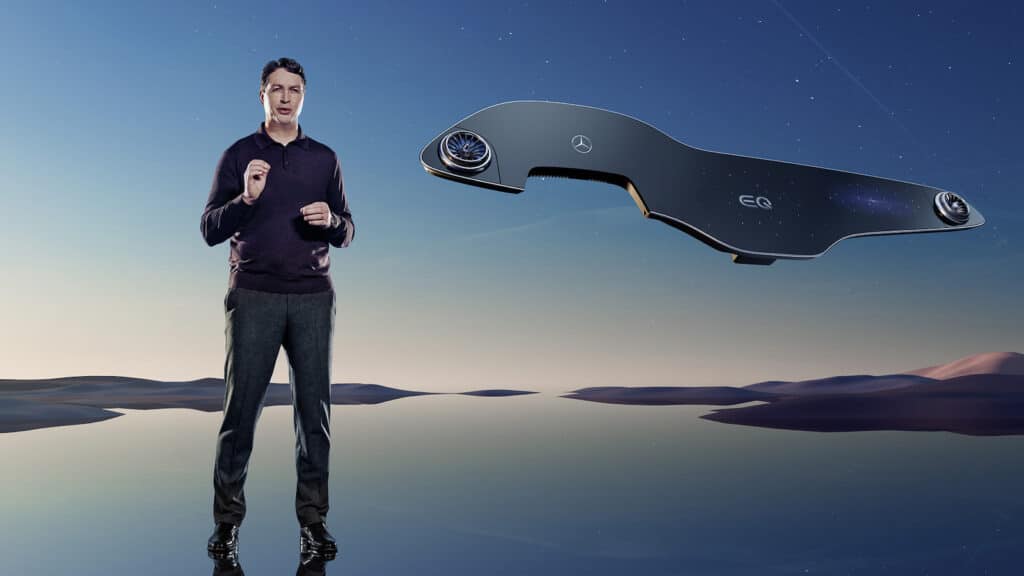
Källenius: I read an article the other day in a Swedish supercar magazine and the chief editor wrote an article where he says I hate screens. Give me the knobs back, the buttons and the knobs. But I’m afraid that’s probably not going to happen. And it’s not specifically tied to the electric car and we’re not doing some different level of digitization in our combustion based vehicles and our electric vehicles, per se. We need to make (technology) more intuitive and easy to use, but we’re not going back and put 50 different knobs and buttons in the car. I just don’t see that.
TDB: Who is the most difficult person to convince (about) electrification?
Källenius: People that buy a G Wagen, an S-Class, or maybe an E … they usually are technology and innovation-minded, and also appreciate luxury aesthetics. They are naturally going to drift to whatever is the next level technology. I think there is some skepticism, but I think it will recede.
TDB: What are you going to do about recyclability of materials?
Källenius: Next to the challenge of CO2 for us, as an industry, is the circular economy, what we call resource preservation. It’s hugely important. Our vehicles, already today, are 95% recyclable. That doesn’t mean we already use 95% of the material. But we put in in our books to raise the amount for every new vehicle, and for beyond the usual candidates like steel. Recycling has to get into the polymers and other things inside the battery cells, no doubt about it.
TDB: One last question. You have the new EQS sedan, but you’ll also have an EQS SUV next year. And the same with the EQE. Won’t that create some branding confusion?
Källenius: Yeah. There are probably PhD thesis documents in marketing talking about nomenclature on the part of Mercedes. When I was in marketing and sales we said let’s clean this up once and for all, and we thought we did. Could we have done a GL QS or something like that (instead of EQS SUV)? We thought it was so obvious when you see the vehicle, you know whether you’re buying an SUV or a sedan. But maybe we didn’t succeed.
